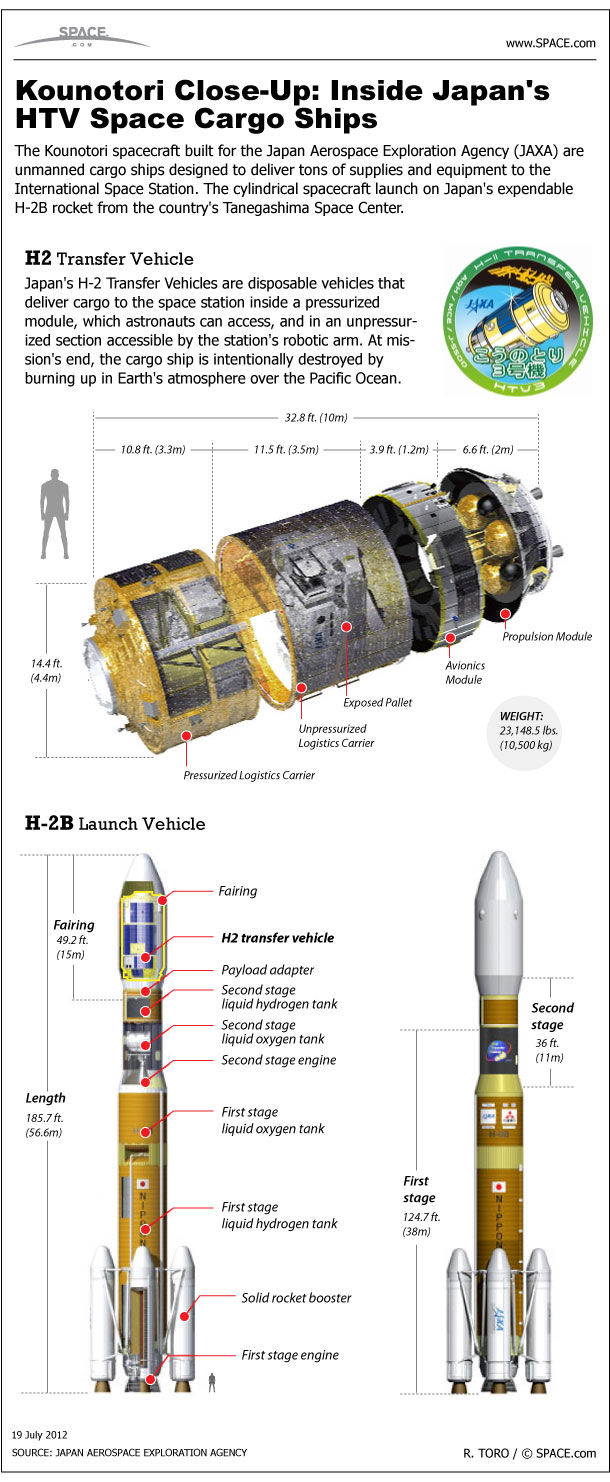Inside Japan's Huge Space Truck (Infographic)

Japan's Kounotori space cargo ships are one of several vital robotic supply ships that ferry fresh food and equipment to the International Space Station.
Built for the for the Japan Aerospace Exploration Agency (JAXA), Kounotori spacecraft (the name means "White Stork" in Japanese) are unmanned cargo ships that deliver tons of supplies, including fresh food, and equipment to the International Space Station. The cylindrical spacecraft launch on Japan's expendable H-2B rocket from the country's Tanegashima Space Center.
Japan's H-2 Transfer Vehicles, a gold cylinder about 33 feet (10 meters) long and 14 feet (4.4 m) wide are disposable vehicles that deliver cargo to the space station inside a pressurized module, which astronauts can access, and in an unpressurized section accessible by the station's robotic arm. The freighters are part of a growing suite of internationally built unmanned cargo spaceships that help supply the International Space Station.
At mission's end, the cargo ship is intentionally destroyed by burning up Earth's atmosphere. JAXA launched the first HTV cargo ship in 2009. A second followed in 2011, with a third scheduled to fly in July 2012.
There are several other robotic cargo ships that deliver supplies to the space station. In addition to Japan's HTV, Russia's Progress space capsules and the European Space Agency's Automated Transfer Vehicles also serve the station.
In the United States, NASA is relying on two companies to develop unmanned space freighters: California-based SpaceX and Orbital Sciences, Corp., of Virginia. The first official SpaceX delivery to the station is slated for later this year.
Join our Space Forums to keep talking space on the latest missions, night sky and more! And if you have a news tip, correction or comment, let us know at: community@space.com.
Get the Space.com Newsletter
Breaking space news, the latest updates on rocket launches, skywatching events and more!
